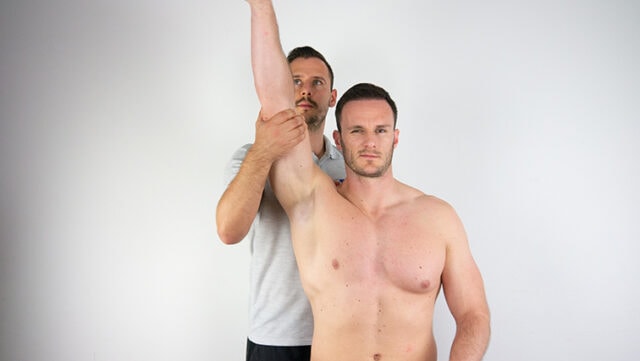Learn
Neer Test for Subacromial Shoulder Pain (SAPS)
In the 1970s and 80s, Neer coined the term “subacromial impingement syndrome”. According to his theory, impingement occurs on the tendinous portion of the rotator cuff by the coracoacromial ligament and the anterior third of the acromion.
According to Reviews by Hegedus et al in 2012 and Gismervik et al. in 2017, the Neer test has a Sensitivity of 59-72% and a specificity of 6%which is why we give it a weak clinical value as a stand-alone test.
To perform the Neer test, the patient is in sitting position. You’re going to stand behind the patient and use one hand to stabilize the patient’s scapula.
Then bring the arm into maximal passive shoulder flexion. Some authors suggest placing the arm into internal rotation to bring the greater tubercle towards the coracoacromial ligament, though Neer’s original description does not state this.
The test is considered positive in case of the reproduction of the patient’s familiar shoulder pain.
Other common tests for subacromial pain syndrome (SAPS) are:
21 OF THE MOST USEFUL ORTHOPAEDIC TESTS IN CLINICAL PRACTICE

Like what you’re learning?
BUY THE FULL PHYSIOTUTORS ASSESSMENT BOOK
- 600+ Pages e-Book
- Interactive Content (Direct Video Demonstration, PubMed articles)
- Statistical Values for all Special Tests from the latest research
- Available in 🇬🇧 🇩🇪 🇫🇷 🇪🇸 🇮🇹 🇵🇹 🇹🇷
- And much more!








